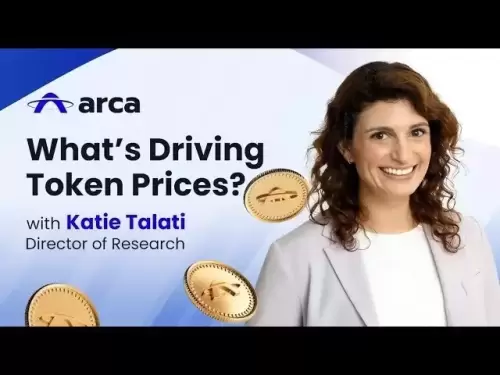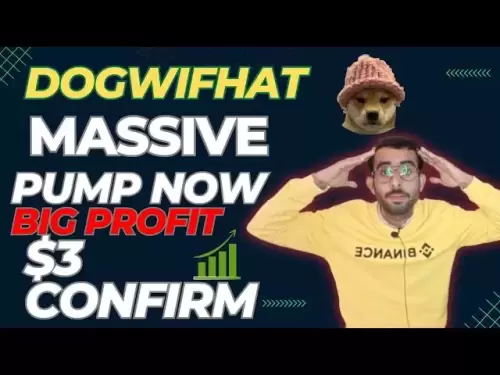-
 Bitcoin
Bitcoin $107,275.1551
-0.32% -
 Ethereum
Ethereum $2,485.3056
1.77% -
 Tether USDt
Tether USDt $1.0005
0.03% -
 XRP
XRP $2.2223
1.31% -
 BNB
BNB $657.7608
1.39% -
 Solana
Solana $156.3566
3.02% -
 USDC
USDC $0.9999
0.01% -
 TRON
TRON $0.2791
1.09% -
 Dogecoin
Dogecoin $0.1651
0.45% -
 Cardano
Cardano $0.5738
2.78% -
 Hyperliquid
Hyperliquid $40.2672
5.82% -
 Bitcoin Cash
Bitcoin Cash $517.5487
5.30% -
 Sui
Sui $2.7981
-0.40% -
 Chainlink
Chainlink $13.3500
-0.36% -
 UNUS SED LEO
UNUS SED LEO $9.1220
1.12% -
 Avalanche
Avalanche $17.9515
-0.32% -
 Stellar
Stellar $0.2361
-0.44% -
 Toncoin
Toncoin $2.9423
2.33% -
 Shiba Inu
Shiba Inu $0.0...01145
-0.68% -
 Litecoin
Litecoin $86.1693
-0.63% -
 Hedera
Hedera $0.1493
0.64% -
 Monero
Monero $315.1374
1.81% -
 Polkadot
Polkadot $3.4002
-0.73% -
 Dai
Dai $1.0001
0.03% -
 Bitget Token
Bitget Token $4.5413
-1.35% -
 Ethena USDe
Ethena USDe $1.0002
-0.01% -
 Uniswap
Uniswap $7.1733
-0.57% -
 Aave
Aave $274.0465
-0.23% -
 Pepe
Pepe $0.0...09810
2.24% -
 Pi
Pi $0.5101
-3.10%
Is UNI's on-chain data useful? How to view large transfers
UNI's on-chain data offers transparency and insights into market trends, helping traders spot whale activity and make informed decisions. Use blockchain explorers to view large transfers.
May 05, 2025 at 08:49 pm

Is UNI's on-chain data useful? How to view large transfers
On-chain data plays a crucial role in the cryptocurrency ecosystem, providing insights into the movement and behavior of assets like Uniswap's native token, UNI. For traders, investors, and enthusiasts, understanding the utility of UNI's on-chain data and how to analyze large transfers can offer significant advantages. This article delves into the importance of UNI's on-chain data and provides a detailed guide on how to view and interpret large transfers.
The Importance of UNI's On-Chain Data
On-chain data is the record of all transactions and activities that occur on a blockchain. For UNI, this data includes everything from the number of tokens transferred to the frequency of transactions and the addresses involved. Analyzing this data can provide valuable insights into market trends, investor sentiment, and potential price movements.
One of the key benefits of on-chain data is its ability to offer a transparent view of the market. Unlike traditional financial markets, where much of the data is hidden behind closed doors, blockchain transactions are publicly available. This transparency allows users to see the real-time movements of UNI tokens, which can be crucial for making informed trading decisions.
Another advantage is the ability to track whale activity. Whales, or large holders of UNI, can significantly impact the market with their trades. By monitoring their activities through on-chain data, traders can anticipate potential market shifts and adjust their strategies accordingly.
On-chain data also helps in understanding the overall health of the Uniswap ecosystem. Metrics such as transaction volume, active addresses, and liquidity pools can indicate the level of engagement and interest in UNI, providing a broader context for its market performance.
How to View Large Transfers of UNI
Viewing large transfers of UNI can be done using various blockchain explorers and analytical tools. Here’s a step-by-step guide on how to do it:
Choose a Blockchain Explorer: Start by selecting a reliable blockchain explorer that supports Ethereum, as UNI is an ERC-20 token. Popular options include Etherscan, Ethplorer, and BscScan.
Search for UNI Token: Once on the explorer's website, search for the UNI token. You can do this by entering "UNI" in the search bar, which will direct you to the token's page.
Navigate to Transactions: On the UNI token page, look for a tab or section labeled "Transactions" or "Transfers." This will show you a list of all recent transactions involving UNI.
Filter for Large Transfers: To focus on large transfers, you can usually apply filters. Most explorers allow you to sort transactions by amount, making it easier to identify significant movements of UNI. Look for transfers that exceed a certain threshold, such as 100,000 UNI, to spot whale activity.
Analyze the Data: Once you have identified large transfers, take note of the sender and receiver addresses. You can click on these addresses to see more details about their transaction history and holdings. This can help you understand the context of the transfer and whether it's part of a larger pattern.
Tools for Analyzing UNI's On-Chain Data
Several tools are available to help you analyze UNI's on-chain data more effectively. Here are some of the most popular ones:
Nansen: Nansen is a blockchain analytics platform that provides detailed insights into Ethereum-based tokens like UNI. It offers features such as wallet labeling, transaction tracking, and market analysis, making it easier to understand large transfers and overall market trends.
Dune Analytics: Dune Analytics allows users to create custom dashboards and queries to analyze on-chain data. You can use it to track UNI transfers, monitor liquidity pools, and generate reports on various metrics. It's particularly useful for those who want to dive deep into the data.
Glassnode: While primarily focused on Bitcoin and Ethereum, Glassnode also offers data on other tokens, including UNI. It provides metrics such as transaction volume, active addresses, and exchange flows, which can be valuable for understanding the broader market dynamics.
Interpreting Large Transfers of UNI
Interpreting large transfers of UNI requires a combination of data analysis and market knowledge. Here are some key points to consider:
Context of the Transfer: Understanding the context of a large transfer is crucial. Is it a transfer between wallets owned by the same entity, or is it a move from a wallet to an exchange? The former might indicate portfolio rebalancing, while the latter could signal an intent to sell.
Frequency and Pattern: Look at the frequency and pattern of large transfers. If a particular address is consistently moving large amounts of UNI, it might be a whale or a major institutional investor. Tracking these patterns over time can provide insights into their trading strategies.
Market Impact: Large transfers can have an immediate impact on the market. If a whale moves a significant amount of UNI to an exchange, it might lead to increased selling pressure and a potential price drop. Conversely, moving tokens away from exchanges could signal a bullish sentiment.
Correlation with Price Movements: Analyze how large transfers correlate with UNI's price movements. If large transfers precede significant price changes, it could indicate that whales are influencing the market. This information can be used to anticipate future price movements.
Practical Applications of UNI's On-Chain Data
The practical applications of UNI's on-chain data are numerous and can benefit various stakeholders in the cryptocurrency ecosystem. Here are some examples:
Trading Strategies: Traders can use on-chain data to develop more informed trading strategies. By monitoring large transfers and other metrics, they can identify potential entry and exit points, manage risk, and capitalize on market trends.
Investment Decisions: Investors can use on-chain data to assess the health and potential of the Uniswap ecosystem. Metrics such as transaction volume and active addresses can provide insights into the level of interest and engagement, helping investors make more informed decisions.
Risk Management: On-chain data can also be used for risk management. By tracking the movements of large holders, investors and traders can better understand the potential risks associated with their positions and adjust their strategies accordingly.
Market Research: Researchers and analysts can use on-chain data to conduct in-depth market research. By analyzing trends and patterns, they can gain a deeper understanding of the factors driving UNI's market performance and share their findings with the broader community.
Frequently Asked Questions
Q: Can on-chain data predict UNI's price movements accurately?
A: While on-chain data can provide valuable insights into market trends and whale activity, it cannot predict price movements with absolute accuracy. It is one of many tools that traders and investors can use to make more informed decisions, but it should be used in conjunction with other forms of analysis.
Q: How often should I check UNI's on-chain data?
A: The frequency with which you check UNI's on-chain data depends on your trading or investment strategy. For active traders, daily or even hourly checks might be necessary to stay on top of market movements. For long-term investors, weekly or monthly checks might be sufficient to monitor the overall health of the ecosystem.
Q: Are there any risks associated with relying on on-chain data?
A: Yes, there are risks associated with relying solely on on-chain data. It can be manipulated by large holders or other market participants, and it does not account for external factors such as regulatory changes or macroeconomic trends. It's important to use on-chain data as part of a broader analysis rather than the sole basis for decision-making.
Q: Can I use on-chain data to identify potential scams or fraudulent activities involving UNI?
A: On-chain data can be a useful tool for identifying potential scams or fraudulent activities. By monitoring unusual transaction patterns or large transfers to unknown addresses, you can spot red flags that might indicate suspicious behavior. However, it's important to combine this with other forms of due diligence and research.
Disclaimer:info@kdj.com
The information provided is not trading advice. kdj.com does not assume any responsibility for any investments made based on the information provided in this article. Cryptocurrencies are highly volatile and it is highly recommended that you invest with caution after thorough research!
If you believe that the content used on this website infringes your copyright, please contact us immediately (info@kdj.com) and we will delete it promptly.
- OKX and Binance Delist Trading Pairs: What's Going On?
- 2025-07-01 02:30:12
- Pepeto vs. Shiba Inu: Can the New Meme Coin Dethrone the King?
- 2025-07-01 02:50:11
- Saylor, Bitcoin, Holdings: Strategy's Crypto Empire Grows
- 2025-07-01 02:30:12
- Coinbase, Altcoins, and Listings: What's the Buzz?
- 2025-07-01 00:30:11
- Chainlink's Bullish Signals: Investors Bet on Long-Term Value
- 2025-07-01 00:50:12
- CICADA Finance Soars on BNB Chain: A TGE Deep Dive
- 2025-07-01 01:30:11
Related knowledge
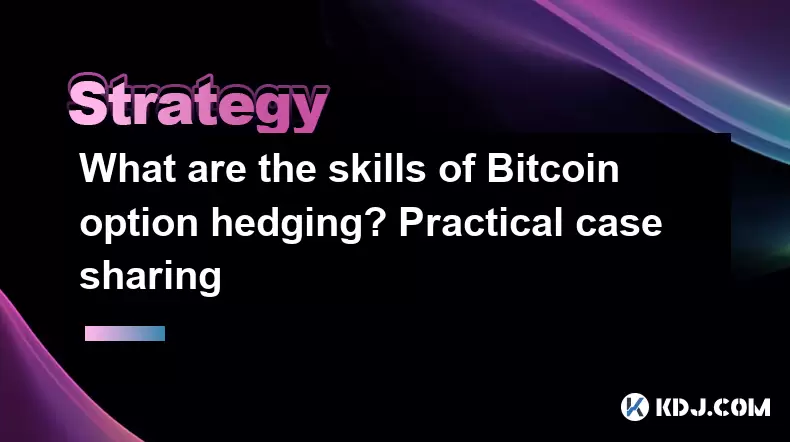
What are the skills of Bitcoin option hedging? Practical case sharing
Jun 24,2025 at 04:01pm
Understanding Bitcoin Option HedgingBitcoin option hedging is a risk management strategy used by traders and investors to protect their positions in the volatile cryptocurrency market. By using options, individuals can limit potential losses while retaining the opportunity for profit. In essence, it allows one to insulate against adverse price movements...

How to use the price difference between Bitcoin spot and futures? Arbitrage strategy
Jun 20,2025 at 02:56pm
Understanding Bitcoin Spot and Futures MarketsTo effectively leverage arbitrage opportunities between Bitcoin spot and futures markets, it's essential to understand the fundamental differences between these two types of markets. The spot market refers to the direct buying and selling of Bitcoin for immediate delivery at the current market price. In cont...
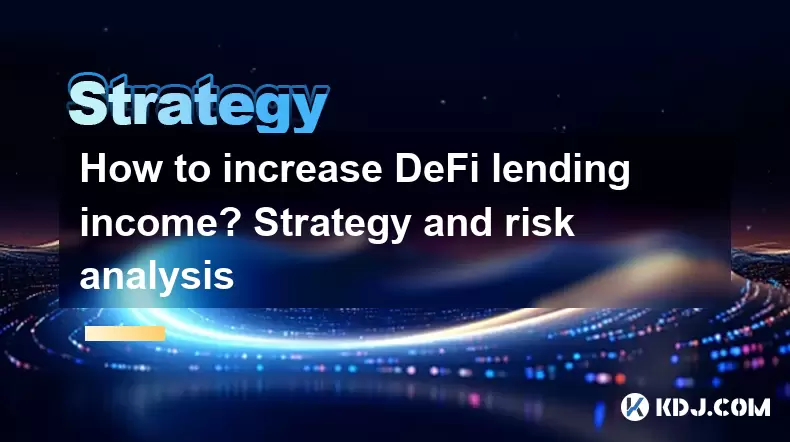
How to increase DeFi lending income? Strategy and risk analysis
Jun 24,2025 at 02:08pm
Understanding DeFi Lending and Its Income PotentialDeFi (Decentralized Finance) lending has emerged as a popular way to earn passive income in the cryptocurrency space. Unlike traditional banking systems, DeFi lending platforms allow users to lend their crypto assets directly to borrowers without intermediaries. The lenders earn interest based on the su...
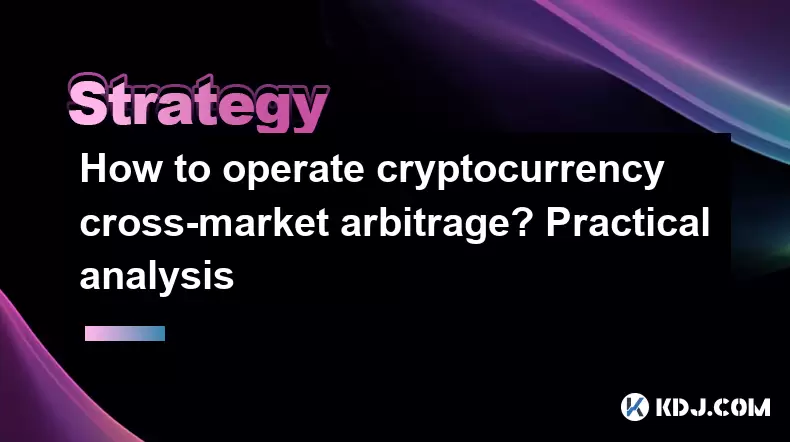
How to operate cryptocurrency cross-market arbitrage? Practical analysis
Jun 23,2025 at 04:01am
Understanding Cryptocurrency Cross-Market ArbitrageCryptocurrency cross-market arbitrage involves taking advantage of price differences for the same digital asset across different exchanges. The core idea is to buy low on one exchange and sell high on another, capturing the profit from the discrepancy. This strategy relies heavily on real-time market da...

How to make profits from high-frequency cryptocurrency trading? Sharing core skills
Jun 19,2025 at 05:07pm
Understanding High-Frequency Cryptocurrency TradingHigh-frequency trading (HFT) in the cryptocurrency market involves executing a large number of trades at extremely fast speeds, often within milliseconds. This method relies on small price discrepancies across exchanges or within a single exchange’s order book. Traders use complex algorithms and ultra-l...

What are the methods of cryptocurrency quantitative trading? Detailed analysis
Jun 22,2025 at 11:07pm
Understanding the Core of Cryptocurrency Quantitative TradingCryptocurrency quantitative trading refers to the use of mathematical models and algorithms to execute trades in the digital asset market. Unlike traditional discretionary trading, which relies heavily on human judgment, quantitative trading leverages data-driven strategies to identify profita...

What are the skills of Bitcoin option hedging? Practical case sharing
Jun 24,2025 at 04:01pm
Understanding Bitcoin Option HedgingBitcoin option hedging is a risk management strategy used by traders and investors to protect their positions in the volatile cryptocurrency market. By using options, individuals can limit potential losses while retaining the opportunity for profit. In essence, it allows one to insulate against adverse price movements...

How to use the price difference between Bitcoin spot and futures? Arbitrage strategy
Jun 20,2025 at 02:56pm
Understanding Bitcoin Spot and Futures MarketsTo effectively leverage arbitrage opportunities between Bitcoin spot and futures markets, it's essential to understand the fundamental differences between these two types of markets. The spot market refers to the direct buying and selling of Bitcoin for immediate delivery at the current market price. In cont...

How to increase DeFi lending income? Strategy and risk analysis
Jun 24,2025 at 02:08pm
Understanding DeFi Lending and Its Income PotentialDeFi (Decentralized Finance) lending has emerged as a popular way to earn passive income in the cryptocurrency space. Unlike traditional banking systems, DeFi lending platforms allow users to lend their crypto assets directly to borrowers without intermediaries. The lenders earn interest based on the su...

How to operate cryptocurrency cross-market arbitrage? Practical analysis
Jun 23,2025 at 04:01am
Understanding Cryptocurrency Cross-Market ArbitrageCryptocurrency cross-market arbitrage involves taking advantage of price differences for the same digital asset across different exchanges. The core idea is to buy low on one exchange and sell high on another, capturing the profit from the discrepancy. This strategy relies heavily on real-time market da...

How to make profits from high-frequency cryptocurrency trading? Sharing core skills
Jun 19,2025 at 05:07pm
Understanding High-Frequency Cryptocurrency TradingHigh-frequency trading (HFT) in the cryptocurrency market involves executing a large number of trades at extremely fast speeds, often within milliseconds. This method relies on small price discrepancies across exchanges or within a single exchange’s order book. Traders use complex algorithms and ultra-l...

What are the methods of cryptocurrency quantitative trading? Detailed analysis
Jun 22,2025 at 11:07pm
Understanding the Core of Cryptocurrency Quantitative TradingCryptocurrency quantitative trading refers to the use of mathematical models and algorithms to execute trades in the digital asset market. Unlike traditional discretionary trading, which relies heavily on human judgment, quantitative trading leverages data-driven strategies to identify profita...
See all articles





















